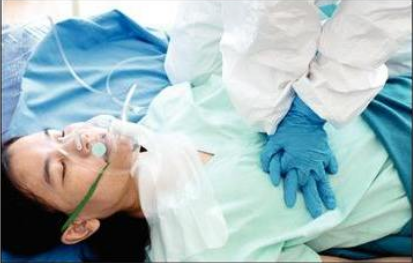
Francisco Colaço
When everyone these days is talking about COVID-19 and its medical effects on the body, readers may think that this article deals with the virus. Not altogether! The reason I am broaching this subject is that in the last three months I lost three of my good friends who, though not harbouring the coronavirus, died suddenly.
Warning signs: Cardiac arrest, sometimes called sudden cardiac arrest, means that your heart suddenly stops beating. This cuts off blood flow to the brain and other organs. It’s an emergency. Cardiac arrest is quick and drastic: You suddenly collapse, lose consciousness, have no pulse, and aren’t breathing. But right before it happens, you could be very tired, dizzy, weak, short of breath, or sick to your stomach. You may pass out or have chest pain…But not always. Cardiac arrest can happen with no warning signs at all.
Our heart has an electrical system that keeps it beating regularly. Cardiac arrest can strike if the electrical signals go haywire and cause an irregular heartbeat (arrhythmia). There are different types of arrhythmias, and most aren’t dangerous. One, called “ventricular fibrillation”, triggers cardiac arrest. Many people who have cardiac arrest also have coronary artery disease. Often, that’s where the trouble starts. Having coronary artery disease means less blood flows into your heart. This can lead to a heart attack that damages your heart’s electrical system and is life-threatening.
Cardiac arrest can also happen for other reasons: Major blood loss with severe lack of oxygen and intense exercise. Our genes may trigger arrhythmias; also changes of our heart's structure (like an enlarged heart) may predispose to cardiac arrest.
Cardiac arrest vs heart attack vs heart failure: Cardiac arrest and heart attack are not synonymous. Unlike cardiac arrest, our heart doesn’t usually stop during a heart attack. Rather, blood flow is blocked in a heart attack, so that the heart muscle doesn’t get enough oxygen. The scar tissue that grows as you suffer a heart attack can mess with the heart’s electrical signals and could put you at risk.
Cardiac arrest and heart failure are also not synonymous. Cardiac arrest strikes suddenly. It’s an instant crisis. Heart failure is different. It’s a condition where our heart gets weaker over time until it can’t send enough blood and oxygen around the body. When our cells don’t get enough of these nutrients, our body doesn’t work as well. You may find it hard to catch your breath when you do simple things like carry groceries, climb stairs, or even walk.
Many people who have cardiac arrest also have coronary artery disease. Often, that’s where the trouble starts. This can lead to a heart attack that damages the heart’s electrical system.
If the patient manages to reach the hospital on time, doctors will watch him/her closely. They will try to find out what caused the cardiac arrest and treat the problem. If you have coronary artery disease, you may get a bypass or a procedure called angioplasty to open narrowed or blocked arteries in your heart.
The cardiac interventionist puts a soft, thin tube called a catheter into a blood vessel in your arm, or thigh and guides it to your heart. He/she may send a special dye that’s visible on X-rays into the tube to check for narrowed or blocked arteries and can also test your heart’s response to certain drugs or electrical signals.
An automated external defibrillator (AED) is a portable electronic device that automatically diagnoses the life-threatening cardiac arrhythmias of ventricular fibrillation (VF) or pulseless ventricular tachycardia, and is able to treat them through defibrillation with the application of electricity which stops the dangerous arrhythmia. An AED is a lightweight, battery-operated, portable device that checks the heart's rhythm and sends a shock to the heart to restore a normal rhythm. The device is used to help people having sudden cardiac arrest. All you need is to turn on the AED and follow the inbuilt instructions.
Today, there’s lot of talk about a device called ICD (implantable cardioverter defibrillator) commonly used in survivors of cardiac arrest or those susceptible to cardiac arrest. This device is a small automated defibrillator that a cardiologist can implant under your skin to send an electric shock to your heart if it finds beating irregularly.
Can COVID-19 boost cardiac arrest?:With regard to COVID-19, while most initial reports focused on the respiratory effects of the virus, recently, serious cardiovascular complications have come to light, reportedly occurring in about 10% to 20% of hospitalized patients.
Someone with pre-existing heart disease who becomes ill with COVID-19 may suffer a heart attack or develop congestive heart failure. This rapid worsening of cardiovascular health is most likely to be due to a combination of the severe viral illness and its increased demands on the heart, only heightened by low oxygen levels due to pneumonia and increased propensity for blood clot formation. In addition to the increase in these heart problems, a more unusual condition called “myocarditis” has also been observed in COVID-19 patients.
Unheralded cardiac arrest takes away many precious lives but if a resuscitation team reaches the spot where the victim suffers cardiac arrest in no time many lives are saved and the sufferer may be bestowed with a new lease of life.
(Dr. Francisco Colaço is a
seniormost consulting physician, pioneer of Echocardiography in Goa, column writer, singer/songwriter/ music aficionado, Mando exponent, past president of the state IMA, social activist, popular orator and
toastmaster, family man, with deep faith in God.)
